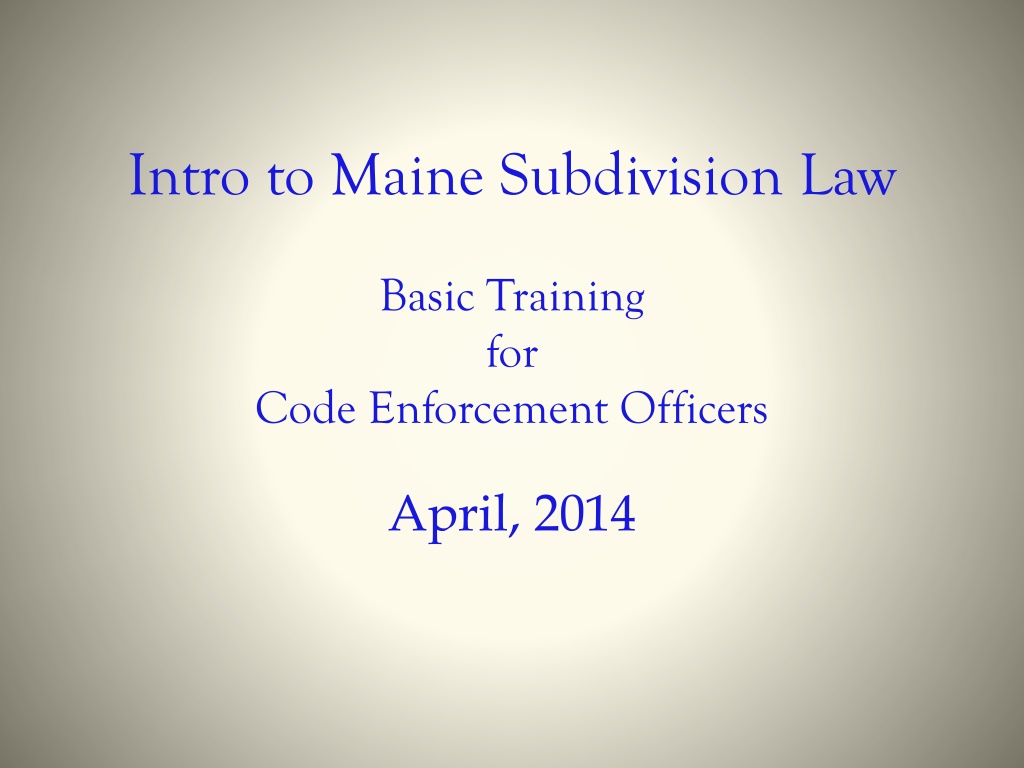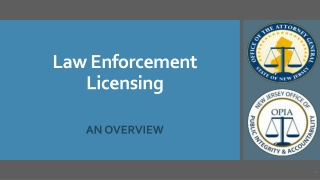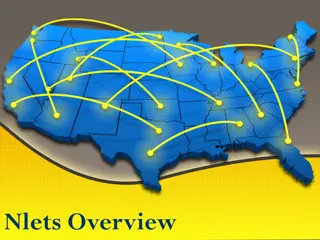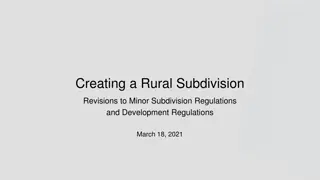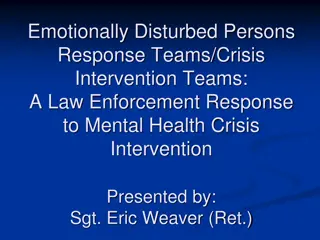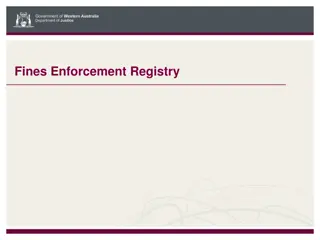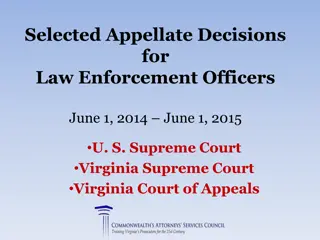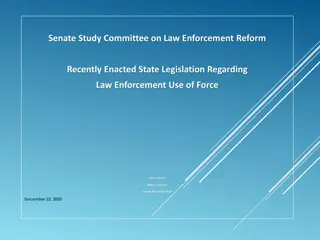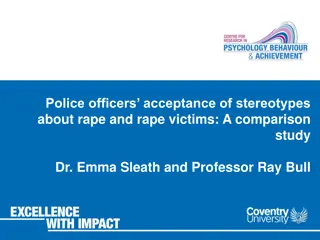Understanding Maine Subdivision Law for Code Enforcement Officers
An overview of Maine Subdivision Law for Code Enforcement Officers, focusing on regulations related to building permits, lot divisions, tracts or parcels of land, and exemptions such as the Homestead Exemption. The law prohibits issuing permits for non-municipally approved subdivisions and defines terms like "tract or parcel of land" and "subdivision." Specific criteria are outlined for determining lot divisions and exemptions under the law.
Download Presentation

Please find below an Image/Link to download the presentation.
The content on the website is provided AS IS for your information and personal use only. It may not be sold, licensed, or shared on other websites without obtaining consent from the author. Download presentation by click this link. If you encounter any issues during the download, it is possible that the publisher has removed the file from their server.
E N D
Presentation Transcript
Intro to Maine Subdivision Law Basic Training for Code Enforcement Officers April, 2014
State Law Local Enforcement Section 4406 prohibits a CEO from issuing a building or use permit for a lot in a subdivision that has not received municipal approval. The CEO, in the review of applications for permits, should routinely determine when a lot was created and whether other lots have been created from the same parcel within five years.
Tract or Parcel of Land Title 30-A, 4401.6 "Tract or parcel of land" means all contiguous land in the same ownership, except that lands located on opposite sides of a public or private road are considered each a separate tract or parcel of land unless the road was established by the owner of land on both sides of the road after September 22, 1971.
Subdivision Title 30-A, 4401.4 "Subdivision" means the division of a tract or parcel of land into 3 or more lots within any 5-year period that begins on or after September 23, 1971. This definition applies whether the division is accomplished by sale, lease, development, buildings or otherwise. The term "subdivision" also includes the division of a new structure or structures on a tract or parcel of land into 3 or more dwelling units within a 5-year period, the construction or placement of 3 or more dwelling units on a single tract or parcel of land and the division of an existing structure or structures previously used for commercial or industrial use into 3 or more dwelling units within a 5-year period.
A. In determining whether a tract or parcel of land is divided into 3 or more lots, the first dividing of the tract or parcel is considered to create the first 2 lots and the next dividing of either of these first 2 lots, by whomever accomplished, is considered to create a 3rd lot, unless:
The Homestead Exemption (1) Both dividings are accomplished by a subdivider who has retained one of the lots for the subdivider's own use as a single-family residence that has been the subdivider's principal residence for a period of at least 5 years immediately preceding the 2nd division; or (2) The division of the tract or parcel is otherwise exempt under this subchapter.
B. The dividing of a tract or parcel of land and the lot or lots so made, which dividing or lots when made are not subject to this subchapter, do not become subject to this subchapter by the subsequent dividing of that tract or parcel of land or any portion of that tract or parcel. The municipal reviewing authority shall consider the existence of the previously created lot or lots in reviewing a proposed subdivision created by a subsequent dividing.
The 40-Acre Exemption C. A lot of 40 or more acres must be counted as a lot, except: (2) When a municipality has, by ordinance, or the municipal reviewing authority has, by regulation, elected not to count lots of 40 or more acres as lots for the purposes of this subchapter when the parcel of land being divided is located entirely outside any shoreland area as defined in Title 38, section 435 or a municipality's shoreland zoning ordinance.
D-1. A division accomplished by devise does not create a lot or lots for the purposes of this definition, unless the intent of the transferor is to avoid the objectives of this subchapter. D-2. A division accomplished by condemnation does not create a lot or lots for the purposes of this definition, unless the intent of the transferor is to avoid the objectives of this subchapter. D-3. A division accomplished by order of court does not create a lot or lots for the purposes of this definition, unless the intent of the transferor is to avoid the objectives of this subchapter.
The Family Exemption D-4. A division accomplished by gift to a person related to the donor of an interest in property held by the donor for a continuous period of 5 years prior to the division by gift does not create a lot or lots for the purposes of this definition, unless the intent of the transferor is to avoid the objectives of this subchapter. If the real estate exempt under this paragraph is transferred within 5 years to another person not related to the donor of the exempt real estate as provided in this paragraph, then the previously exempt division creates a lot or lots for the purposes of this subsection. "Person related to the donor" means a spouse, parent, grandparent, brother, sister, child or grandchild related by blood, marriage or adoption. A gift under this paragraph can not be given for consideration that is more than 1/2 the assessed value of the real estate.
D-5. A division accomplished by a gift to a municipality if that municipality accepts the gift does not create a lot or lots for the purposes of this definition, unless the intent of the transferor is to avoid the objectives of this subchapter.
Sale to Abutter Exemption D-6. A division accomplished by the transfer of any interest in land to the owners of land abutting that land that does not create a separate lot does not create a lot or lots for the purposes of this definition, unless the intent of the transferor is to avoid the objectives of this subchapter. If the real estate exempt under this paragraph is transferred within 5 years to another person without all of the merged land, then the previously exempt division creates a lot or lots for the purposes of this subsection.
E. The division of a tract or parcel of land into 3 or more lots and upon each of which lots permanent dwelling structures legally existed before September 23, 1971 is not a subdivision. F. In determining the number of dwelling units in a structure, the provisions of this subsection regarding the determination of the number of lots apply, including exemptions from the definition of a subdivision of land.
G. Notwithstanding the provisions of this subsection, leased dwelling units are not subject to subdivision review if the municipal reviewing authority has determined that the units are otherwise subject to municipal review at least as stringent as that required under this subchapter.
H-1. This subchapter may not be construed to prevent a municipality from enacting an ordinance under its home rule authority that: (1) Expands the definition of "subdivision" to include the division of a structure for commercial or industrial use; or (2) Otherwise regulates land use activities.
A municipality may not enact an ordinance that expands the definition of "subdivision" except as provided in this subchapter. A municipality that has a definition of "subdivision" that conflicts with the requirements of this subsection at the time this paragraph takes effect shall comply with this subsection no later than January 1, 2006. Such a municipality must file its conflicting definition at the county registry of deeds by June 30, 2003 for the definition to remain valid for the grace period ending January 1, 2006. A filing required under this paragraph must be collected and indexed in a separate book in the registry of deeds for the county in which the municipality is located.
I. The grant of a bona fide security interest in an entire lot that has been exempted from the definition of subdivision under paragraphs D-1 to D-6, or subsequent transfer of that entire lot by the original holder of the security interest or that person's successor in interest, does not create a lot for the purposes of this definition, unless the intent of the transferor is to avoid the objectives of this subchapter.
Examples (Assume that all transactions take place within a 5-year period)
Examples (Assume that all transactions take place within a 5-year period)
Examples (Assume that all transactions take place within a 5-year period)
Examples (Assume that all transactions take place within a 5-year period)
Examples (Assume that all transactions take place within a 5-year period)
Examples (Assume that all transactions take place within a 5-year period)
Examples (Assume that all transactions take place within a 5-year period)
Examples (Assume that all transactions take place within a 5-year period)
Examples (Assume that all transactions take place within a 5-year period)
Examples (Assume that all transactions take place within a 5-year period)
Examples (Assume that all transactions take place within a 5-year period)
Examples (Assume that all transactions take place within a 5-year period)
Examples (Assume that all transactions take place within a 5-year period)
Examples (Assume that all transactions take place within a 5-year period)
Examples (Assume that all transactions take place within a 5-year period)
Examples (Assume that all transactions take place within a 5-year period)
Examples (Assume that all transactions take place within a 5-year period)
Examples (Assume that all transactions take place within a 5-year period)
Examples (Assume that all transactions take place within a 5-year period)
Examples (Assume that all transactions take place within a 5-year period)
Examples (Assume that all transactions take place within a 5-year period)
Examples (Assume that all transactions take place within a 5-year period)
Examples (Assume that all transactions take place within a 5-year period)
Examples (Assume that all transactions take place within a 5-year period)
Phil Carey Senior Planner, Municipal Planning Assistance Program Department of Agriculture, Conservation & Forestry 287-3860 phil.carey@maine.gov www.maine.gov/doc/commissioner/landuse/index.shtml
